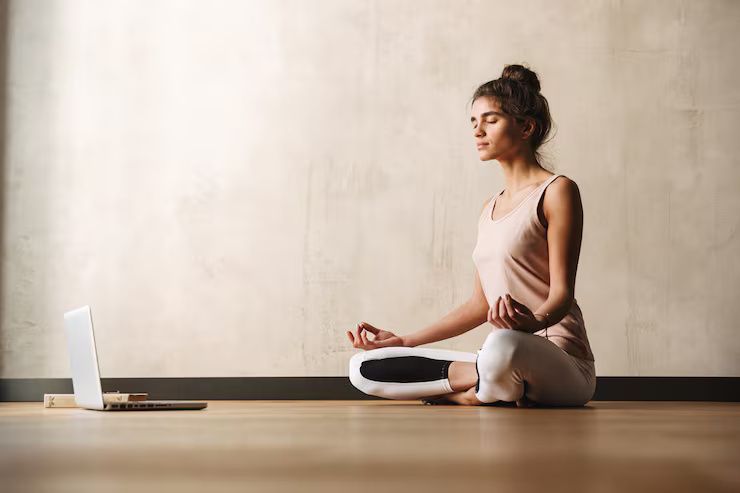Yoga wellness is a holistic approach to health that integrates physical postures, breathing exercises, and mindfulness practices. Rooted in ancient Indian traditions, yoga has evolved into a widely adopted wellness practice across the world. It serves as both a form of physical exercise and a mental health support system. Yoga wellness exists to promote harmony between the mind, body, and environment—creating a foundation for healthy living, stress reduction, and improved quality of life.
Yoga is not just about flexibility or fitness; it supports emotional clarity, inner peace, and resilience. From simple breathing techniques (pranayama) to advanced physical postures (asanas), yoga offers accessible tools for people of all ages. It’s practiced in homes, parks, workplaces, and studios. With rising interest in natural and preventative health, yoga continues to grow in popularity worldwide.

The importance of yoga wellness is more relevant than ever in today’s fast-paced world. Chronic stress, sedentary lifestyles, digital overload, and mental health struggles have prompted individuals to seek balance. Yoga offers non-invasive, low-cost support for improving flexibility, strength, mood, and sleep quality. It is especially useful for:
-
Office workers facing back pain and poor posture
-
Students and professionals experiencing anxiety
-
Seniors improving mobility and joint function
-
Individuals managing chronic conditions such as hypertension or diabetes
Yoga also encourages mindfulness, which enhances emotional awareness and overall mental resilience. Practicing yoga regularly can support self-regulation, concentration, and personal growth.
Over the past year, yoga wellness has seen several developments. In 2024 and early 2025, digital platforms offering guided yoga practices surged in popularity. Apps like Down Dog, Alo Moves, and Yoga International reported increased downloads due to home-based routines. The integration of yoga into corporate wellness programs has also grown, especially in industries focusing on employee mental health.
June 21st continues to be celebrated globally as International Day of Yoga, with 2025’s theme emphasizing “Yoga for Self and Society.” Another notable trend is the rise in trauma-informed yoga, used in therapy, rehabilitation, and social support programs.
Many countries have adopted supportive policies and guidelines around yoga practices. In India, the Ministry of AYUSH regulates and promotes traditional wellness systems, including yoga. It has developed standardized protocols, yoga education curricula, and wellness center certifications. The Yoga Certification Board (YCB) under the ministry ensures the quality of training for yoga instructors.
In the United States, yoga is often regulated as a wellness activity rather than a medical practice. However, organizations such as the Yoga Alliance provide professional certifications and set ethical standards. Schools offering yoga-based physical education often follow state-approved curriculum guidelines. Health insurers are gradually expanding support for yoga-based therapy, especially under Medicare Advantage wellness programs.
In the UK, yoga teachers often register with British Wheel of Yoga (BWY) or Yoga Alliance Professionals, which sets training standards and promotes safe teaching practices. Government programs increasingly support community-based yoga for mental health and elder care.
A variety of tools and digital resources are available to support yoga wellness, both for beginners and advanced practitioners:
Websites and Learning Platforms
-
Yoga Alliance – Certification, education, and ethical guidelines
-
Yoga Journal – Pose libraries, articles, and how-to guides
-
Alo Moves – Subscription-based video classes from top instructors
-
DoYogaWithMe.com – Free and paid video sessions for all levels
Apps and Mobile Tools
-
Down Dog – Personalized yoga sequences based on skill, time, and focus
-
Insight Timer – Meditation and mindfulness tools, including yoga Nidra
-
Daily Yoga – Fitness and wellness tracking with guided flows
-
Asana Rebel – Blends yoga with fitness and nutrition guidance
Templates and Printables
-
Weekly yoga tracker sheets
-
Printable pose charts for beginners
-
Mindfulness and breathing exercise guides
These tools offer flexibility for users to customize their wellness routines based on time, goals, and lifestyle.
FAQs – Common Questions About Yoga Wellness
What is the best type of yoga for beginners?
Hatha yoga is often recommended for beginners due to its slow pace and focus on basic postures. Other beginner-friendly types include Yin yoga and Restorative yoga.
Can yoga help with mental health?
Yes. Studies have shown that yoga can reduce symptoms of anxiety and depression. Mindful movement, breathwork, and meditation all support emotional well-being.
How often should I practice yoga for wellness benefits?
Consistency is key. Practicing yoga 3–5 times per week for 20–60 minutes can lead to noticeable physical and mental improvements.
Is yoga wellness safe for seniors or people with health conditions?
Yes, with modifications. Many yoga poses can be adapted for seniors or people with joint, heart, or mobility concerns. It’s advised to consult a healthcare provider or certified instructor before starting.
Do I need special equipment to practice yoga at home?
Not necessarily. A non-slip yoga mat, comfortable clothing, and an optional cushion or block are sufficient for most home routines.
Yoga wellness is a lifelong practice that promotes balance, awareness, and vitality. As interest grows in natural methods of self-care and stress relief, yoga continues to offer accessible and effective solutions for individuals across age groups and fitness levels.
By integrating simple breathing techniques, stretching, and mindfulness, yoga contributes to a healthier body and calmer mind. Whether practiced in a studio or your living room, yoga wellness adapts to your lifestyle and evolves with your needs.
With the support of digital tools, certified instruction, and national wellness programs, there’s never been a better time to explore yoga as a foundation for well-being.